
Page
Page



Page
Page

Page
Designed to protect patient privacy, Ontario’s PHIPA legislation is so strict that it may backfire and prevent patients from getting medical attention that could save their lives. A panel at the University of Toronto discussed PHIPA’s problems and also offered some solutions.
(Pictured l to r) Christine Sham; Mahmoud Azimaee; Don Willison; and moderator Fahreen Walimohamed. SEE STORY ON PAGE 10.
OTTAWA – The Canadian Association of Radiologists (CAR) is moving forward with plans for the development of a national, clinician-led AI Validation Network (HAIVN) to increase confidence in artificial intelligence applications deployed in the Canadian healthcare space.
Validating AI software in Canada, claims Dr. Jaron Chong, chair of CAR’s standing committee on artificial intelligence, will increase trust in AI applications and streamline deployment in healthcare settings.
“We routinely get emails and questions from community radiologists asking us what’s the best lung nodule or breast lesion software,” said Dr. Chong, explaining the need for a Canadian AI validation network. There have been many deployments of AI
software that didn’t quite meet expectations. A vendor would invest six months or a year of engineering time in a relationship for a potential customer only to result in disappointment.”
Dr. Chong added, “We felt it was important to use representative Canadian datasets to validate AI software and that’s really what HAIVN is all about.”
The original proposal was changed to encompass AI applications in healthcare, generally.
Originally called the Radiology AI Validation Network, or RAIVN, after discussions with regulators and vendors, the proposal was ultimately changed to encompass AI applications in healthcare generally.
“In healthcare, AI was initially about computer vision and focused on radiology, but it is now being applied more broadly with the introduction of large language models, chatbots and AI scribes”, noted Dr. Chong, who is also a member of Health Canada’s Scientific Advisory Committee on Digital Health Technologies and an assistant professor at Western University’s Department of Medical Imaging.
“Radiology represents a small subset of the broader healthcare system, so validation isn’t just a radiology issue. It’s a broader issue about how we acquire the correct software and validate it to work effectively in a Canadian healthcare environment.”
“Pre-market trials by vendors have their limitations because they are often performed at either a single centre or clusters of
centres, often in other countries. They may not be representative of a broader spectrum of practices, and less often performed in community practices with older hardware and different patient populations,” noted Dr. Chong.
“Instead of relying on 1,000 cases from one academic site, HAIVN will validate AI software using a collection of cases that are much more representative of Canada’s population and healthcare system.”
According to Dr. Chong, post-market validation benefits vendors because it provides them with confidential feedback on the accuracy and potential use of their software instead of having to face reputational risks of trial deployment. Clinicians will also benefit because they’ll see the results of the validation by HAIVN. “They’ll know it has worked in 10 other sites and that there’s a good chance it will work for them as well,” said Dr. Chong.
HAIVN would not limit itself to testing for accuracy. Discussions with many users of AI software convinced CAR that it’s not only quantitative but qualitative evalua-
tion that’s needed, to comment on how a software solution would interact with a radiologist’s workflow.
“You can have an AI application for lung nodule detection that performs at 99 percent accuracy, but if it takes five minutes per case to boot up and you have to preload the images, no one’s going to use it, so our proposed approach would be a combination of quantitative and qualitative evaluation,” said Dr. Chong.
“Vendors need to have an appreciation of the pressures and volume of cases radiologists are facing,” he added. “When you have a solution that isn’t compatible with a radiologist’s workflow, even if it’s 99 percent accurate, you’re going to have an uphill battle for user adoption and uptake. Any way you can speed up that workflow and increase efficiency without unnecessary interaction, is going to garner that much more clinical enthusiasm.”
Dr. Chong urges vendor engineering teams to prioritize relationships with clinicians when building AI solutions. Downloading cases off the internet and working in isolation could result in a solution that at best may perform a detection task, but is

Dr.
too cumbersome and time consuming to use, and at worst is irrelevant or dangerous to clinical management.
Many AI applications are first submitted to the U.S. Food and Drug Administration for approval because of the size and attractiveness of the much larger U.S. market before being submitted for approval in
Infoway
Fax: (905) 709-2258. Internet: www.canhealth.com. E-mail: info2@canhealth.com. Canadian Healthcare Technology will publish eight issues in 2024. Feature schedule and advertising kits available upon request. Canadian Healthcare Technology is sent free of charge to physicians and managers in hospitals, clinics and nursing homes. All others: $67.80 per year ($60 + $7.80 HST). Registration number 899059430 RT. ©2024 by Canadian Healthcare Technology. The content of Canadian Healthcare Technology is subject to copyright. Reproduction in
Canada, but Health Canada’s focus on minimum safety may not be sufficient to encourage appropriate AI adoption, according to Marc Venturi, CAR’s director of accreditation.
Health Canada is unable to directly and independently evaluate every claim by a vendor’s solution. Validation by HAIVN, by contrast, will be a more detailed study that addresses if a solution works for its use case in the Canadian healthcare system, for patients, for radiologists and for both academic and community sites alike. Validation using Canadian datasets is critical because demographic, socio-economic and healthcare system differences can affect AI accuracy.
For example, applications developed in the U.S. market that may reinforce systemic biases in oncology patient outcomes, could be inherently related to patient access to private insurance.
“But when you propagate a model to a public healthcare Canadian population, the factors a prediction model may utilize may no longer hold true,” warned Dr. Chong.
“If clinicians see evidence that an AI solution works on a Canadian dataset, they’re going to be much more convinced than if it has been validated using a dataset from somewhere else. We are only now beginning to grapple with the factors that could thwart an AI model. It could be a gender difference, an ethnic difference or an age difference. There are variations of hardware or imaging protocols that could affect performance. It will take us some time to get clinical experience with these models to learn why something works in A but not in B.”
While CAR is committed to a national, clinician-led AI validation network, there are still many details to work out, among them funding.
Responding to potential vendor concern about HAIVN representing a new level of red tape, Dr. Chong points out that if vendors don’t undergo some form of mediated validation for their AI applications, their next level of validation is the open market and if it doesn’t work, they waste time, reputation, and clinician goodwill.
“It’s far better to find out in a confidential and controlled validation setting if a solution has difficulty generalizing, and to permit a vendor to re-engineer and tweak a solution,” said Dr. Chong.
“Without a validation network like HAIVN, we’re probably going to waste a lot of time, energy, and money buying and deploying applications that don’t meet our needs and could even be detrimental to patient care.”
Contributing Editors
Dianne Craig dcraigcreative@yahoo.ca
Dianne Daniel dianne.l.daniel@gmail.com
Dr. Sunny Malhotra
@drsunnymalhotra
Norm Tollinsky tollinskyn@gmail.com
Art
Art










ha e c h e t vercom O d v alcifie y c heavil e s mag d i enhance de tion truccons re stand new A




















t r y a oronar f c s o allenge e p h g t ombinin y c s b essel IQ . P IQE h P it s w harpnes ima cardiac sdeliver C cardiac in dard
n st n i atio isualiz y v er
d esolutio r r e up E s Q compromis without ges y clarit T
t c bea - ne f o r o owe
Overcome the challenges of coronary artery visualization in stents and heavily calcified vessels by combining the power of one-beat cardiac and AI enhanced image sharpness with PIQE. PIQE super resolution deep learning reconstruction delivers sharp cardiac images without compromising on noise, temporal resolution or dose. Read this whitepaper to learn more >>


re oral temp noise, dose. or esolution d t Rea
r t hitepape s w hi
o


VANCOUVER – The architect’s rendering of the future research and support centre at the new St. Paul’s Hospital on the Jim Pattison Medical Campus – expected to open in 2028 – shows a sleek tower connected by a skyway to the hospital. That link will operate like an artery carrying people and ideas back and forth between the two centres.
“It’s a conduit allowing the flow of patients, clinicians and scientists, along with questions, problems and solutions,” said Dr. Darryl Knight, vice president of research and academic affairs at Providence Health Care and president of Providence Research.
“We host world leading researchers and clinician scientists developing new ideas and solutions, but all that amazing work won’t matter if it doesn’t leave our labs and get to the patients. This bridge will certainly expedite the process.”
The research centre and hospital are both important new projects at Providence. By juxtaposing such a large research and innovation centre directly beside a major, acute care and teaching hospital like St. Paul’s, the idea is to spur real-world problem-solving and innovation.
That research and innovation facility –currently known as the Clinical Support and Research Centre or CSRC – will house upwards of 950 researchers, clinician/scientists, students and staff. They will be equipped with the latest technologies, enabling them to test and develop scores of forward-thinking ideas and solutions.

The CSRC will also contain offices for medical specialists, bringing the connection between clinicians and researchers even closer. And to ease one of their own real-world challenges, it will have a childcare centre with space for 49 kids.
So, it wasn’t just political hype when Premier David Eby recently said, “This new research centre will help define the future of medicine. We are going to see scientific breakthroughs translated into realworld healthcare, delivering better services and treatments for patients.”
The provincial government and Providence are investing a large portion of the
BRAMPTON, ONT. – The marriage of old and new technologies at William Osler Health System (Osler) is not only yielding impressive results in the care of stroke patients, the organization’s new Stroke Dashboard is also among the first in Canada to deliver real-time stroke care data in a visually friendly digital format.
“At any given time, we can be caring for over 50 inpatients across our two stroke units or elsewhere throughout our Brampton Civic and Etobicoke General Hospitals,” said Anne-Marie Graham, Osler’s director, Cardiovascular, Chronic Disease, Stroke and Wound.
“During each patient’s care pathway, they are regularly assessed for over 21 different quality care metrics based on Canadian Stroke Best Practice. Having access to real-time data on each individual patient is crucial to providing quality stroke care and ensuring each patient is on track in their recovery plan and assessment.”
Prior to introducing the Stroke Dashboard at Osler, tracking stroke quality metrics was a labour-intensive process, compounded by monitoring patients on multiple units across two hospital sites. The stroke team previously used bullet rounds and a Kardex worksheet to manually track each patient’s progress on
$638 million needed to build the centre, with additional funding coming from ChildCare BC New Spaces Program, and St. Paul’s Foundation, which has committed to raising $88 million from the philanthropic community to bring the vision for the CSRC to life.
There’s an emphasis on pushing its innovations out into the real world. To this end, the core of the CSRC will be the Innovation Centre, where the facility’s researchers will work closely with privatesector partners to produce viable products for worldwide use.
Already, the global medical devices gi-
ant Masimo has decided to open shop in Vancouver to work more closely with the centre’s scientists and clinicians. Many other alliances are in the works, as well.
There are facilities for meetings and presentations, as well as rooms where the partners can roll up their sleeves and test products in a sandbox environment. Companies are going to be encouraged to come in and develop products jointly with the CSRC researchers.
This model emerged after a good deal of fact-finding. “We worked hard to find what has succeeded in research institutes –in Canada, the U.S., southeast Asia, Australia and the UK,” said Dr. Knight. “And we also put our own spin on it.”
In addition to working with the corporate titans of the world, the facility will be fostering start-ups at its innovation centre.
Even the location of the centre is a kind of innovation – it will be located in the False Creek Flats neighborhood of Vancouver, next door to Vancouver’s East Side, one of the poorest neighborhoods in Canada.
Researchers at Providence already have expertise in addictions, HIV/AIDS and other urban issues associated with lowincome populations. They will be developing solutions that can benefit this neighborhood.
“We’ve got an opportunity to solve pressing issues in the Downtown Eastside community,” said Dr. Knight. “And if we can solve them here, we can take them around the world.”
To do so, Providence researchers will be
their respective care pathway.
“We needed a singular forward-thinking approach with at-a-glance features to ensure each patient was meeting the right milestones on their care pathway at the right time,” said Terri Lynn Hansen, Osler’s director, Acute General Medicine, Critical care, Respiratory Therapy and Transitions, and former director of Osler’s stroke program. “The Stroke Dashboard has been an absolute gamechanger for the team in terms of patient flow and quality care management.”
Built in-house, the dashboard was the brainchild of a working group consisting of cross-departmental stakeholders, including representatives from Osler’s Decision Support, Applications, and Information, Intelligence and Technical Innovation (IITI) teams.
Leveraging knowledge used to build Osler’s highly successful digital Operational Command Centre and adopting visual aspects of the organization’s electronic Transfer of Accountability, the Stroke Dashboard applied Microsoftpowered Business Intelligence (BI) to pull data from Osler’s existing Meditech system.
“We use the Power BI to run Structured Query Language (SQL) queries against the Meditech database, including admissions, nursing modules, order entry
modules, health records, home care referrals and rehabilitation referrals,” said Rachelle Maguire, Osler Systems Analyst, Applications. “The dashboard pulls all the information the stroke team needs on patients in real-time, without the user having to go into various modules to look for it.”
Among its many features, the Stroke Dashboard uses a visually effective set of green checkmarks and red ‘x’s in a column format that help frontline staff quickly view what milestones along each
Since its launch in May 2023, the Stroke Dashboard has led to a 1.9-day reduction in stroke patients’ length of stay.
patient’s journey have been completed and which ones are yet to be done. Have they had their ECG? Have they had their echocardiogram? Has a swallowing assessment been carried out?
If a milestone doesn’t apply to a particular patient, it is indicated as a ‘n/a’ to ensure a timely discharge.
“The beauty of the dashboard is that it consolidates the information the stroke team needs about all of its patients together in one place at the click of a button, regardless of where those patients
are in the hospital,” said Maguire, whose team works with stakeholders to continually evolve hospital dashboards to ensure they are consistently meeting users’ needs and are patient-centred.
Stroke team members can access the dashboard from a wall-mounted screen in the report room on each unit, or from individual computers using secure access. Staff can also safely view the dashboard from Osler’s Operational Command Centre.
Since launching the Stroke Dashboard in May 2023, its use has led to a 1.9-day reduction in stroke patients’ length of stay and a 10 percent increase in AlphaFIM completion within three days, as well as reduced wait times for other tests.
Alpha-FIM is a standardized method of assessing patients to determine how debilitating their stroke is and who will need a longer period to progress through their recovery.
“From a best practice perspective, we can immediately see if there are stroke patients in the emergency departments or intensive care units who need to be admitted to one of our stroke units, if we need to escalate a test that a patient hasn’t yet received, or if a patient has achieved all their milestones and is ready for discharge,” said Julie Merhar, Osler’s clinical manager, Stroke Program.


















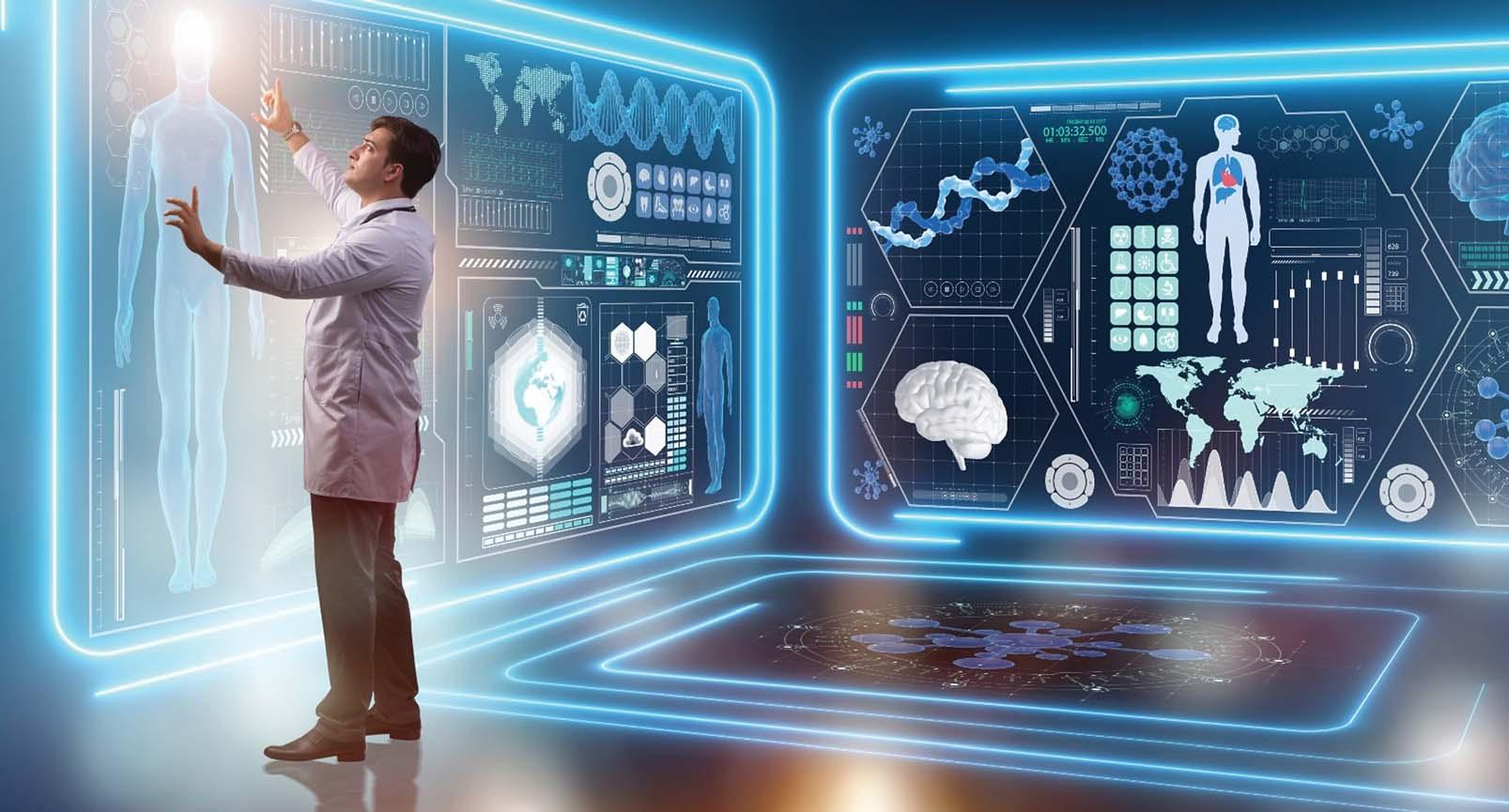
The Masters of Health Informatics (MHI) program at the Institute of Health Policy, Management and Evaluation at the University of Toronto develops students into health informaticians who bridge the gap between technology and the health information needs of clinicians, patients, administrations, and policy-makers. One of the foundational courses is the Complexity of Clinical Care for Non-Clinicians course.
This course previously included an opportunity for students to shadow clinicians – such as nurses – in their real-world environments so they can better apply program learnings to actual healthcare problems. “The shadowing component of the Complexity of Clinical Care for Non-Clinicians class was invaluable,” says Jennifer Tin, alumni of the MHI program. “Healthcare environments are so incredibly complex and nuanced, and to be a good health informatician you really do need a good grasp of what those workflows are in order to integrate technologies seamlessly and meaningfully.”
However, due to the current health human resources shortage, students no longer have the opportunity to shadow nurses in real clinical environments.
As alumni of the program, we suggested using virtual reality as an innovative way to help bridge that gap. Virtual reality (VR) was a novel teaching tool for the MHI program; and with the support from Dr. Karim Keshavjee, program director of

the MHI program, we worked with course instructors Dr. Gillian Strudwick and Dr. Damian Jankowicz to validate the concept.
The initiative was approved for $50,000 of funding by the Ontario Exchange program through eCampus Ontario. We were also matched with SimFront, a private-sector company, to provide expertise in virtual reality for education.
Finally, we consulted educators and researchers with experience in VR. One of the key takeaways from our consultations was to deliberately focus on creating the user experience that is as realistic and authentic as possible.
This was a guiding principle for us as we worked through the planning and execution of this project. We decided to leverage 360 video – which allows the viewer to control the view and look around – rather
than computer-generated virtual reality and to set our sights on finding a true clinical environment to film in, rather than a simulation lab.
We were fortunate to be able to partner with Michael Garron Hospital. The facility was undergoing a campus transformation, which included the construction of the new Ken and Marilyn Thomson Patient Care Centre.
And we had the exciting opportunity to film in one of the units before it was used for clinical care for the first time.
The unit included patient beds, vital signs monitoring equipment, hoists, linen carts, workstations, wall mounted hand sanitizers, and real-time location systems (RTLS).
After filming, SimFront delivered four “360 videos”, which highlighted common interactions between nurses, patients and
technology used on the unit. Each video, which can be used with VR headsets or traditional 2D displays, demonstrates a key hospital workflow: shift handover, assessments, medication administration, and patient discharge.
In the first video, the incoming nurse receives handover from the outgoing nurse at the team station, where they review the eWhiteboard in the electronic health record (EHR), then navigate to the patient chart to see patient medical history, orders, medication administration record (MAR), and clinical notes.
The second video shows the nurse conducting initial rounds and assessment of a patient, including vital signs, pain assessment, orientation to environment, and reviewing orders.
In the third video, the nurse administers an oral pain medication (including barcode scanning devices and MAR documentation) and receives an alert to re-assess the patient’s pain.
The fourth video highlights the discharge process, where the nurse reviews the discharge package with the patient’s family and discharges the patient back to the community.
There has been favourable feedback from students to the videos, and we plan to continue developing them.
An-Qi Shen is an RN, Director of Clinical Innovation at Think Research, and Adjunct Lecturer at U of T. Melissa Menecola is an RN and Sessional Lecturer at U of T.
In the fast-paced environment of long-term care, where the well-being of residents is the highest priority, healthcare providers constantly seek innovative solutions to enhance efficiency and care quality. EDAN, a leading name in medical devices, steps into this space with its groundbreaking ALLINK solution, designed to free nurses’ hands, allowing them to focus more on patient care than on routine tasks.
Compact power in assisted livingthe iM3S handheld vital signs monitor: For assisted living facilities, where the comfort and mobility of residents are paramount, EDAN introduces the iM3S, a compact handheld vital signs monitor that redefines portability and efficiency. As the smallest of its kind, the iM3S boasts a sleek, fashionable design that makes vital signs monitoring a breeze during spot checks.
Despite its size, it doesn’t compromise on functionality, offering comprehensive vital measurements including SpO2, NIBP, and an optional TEMP module. The iM3S exemplifies how technology can simplify routine checks, ensuring residents’ health metrics are closely monitored without intruding on their daily lives.
A benchmark for skilled nursing facilities: Skilled nursing environments demand more from their medical technology – reliability, efficiency, and ease of
use. The iM3 vital signs monitor rises to the challenge with its ultra-slim design, large capacitive touchscreen, and a suite of innovations. It’s not just a device but a comprehensive monitoring solution that includes SpO2, NIBP, and Temp measurements.
Paired with a trolley and the tabletbased vital-link automation system, the iM3 serves both for continuous monitoring and spot checks. Its integration through the ALLINK solution ensures seamless connectivity with PointClickCare’s EMR, streamlining data flow and improving care coordination in skilled nursing settings.
Advancing long-term acute careCentral monitoring with ALLINK: Long-term acute care facilities require meticulous attention to patient monitoring, often across multiple locations. EDAN addresses this challenge with its central monitor system, see-it-anywhere, anytime via web or mobile, designed to oversee multiple patients in different residences.
This system not only allows for scheduled vital checks but also provides real-time alarm triggers, ensuring prompt attention to any changes in a patient’s condition. The integration with
ALLINK and PointClickCare’s EMR means that all data is consolidated and easily accessible, enhancing decisionmaking and patient management.
Seamless integration with PointClickCare via ALLINK: At the heart of EDAN’s solutions is the ALLINK integration system, a powerful tool that connects EDAN’s devices, from patient monitors and vital signs machines to ECGs and Fetal Monitors, with PointClickCare’s leading long-term care EMR. This integration facilitates a seamless flow of data across devices and systems, reducing manual entry, minimizing errors, and saving valuable time for healthcare providers. With ALLINK, facilities can ensure comprehensive, highquality care delivery, supported by accurate and up-to-date patient data.

About EDAN: Edan is a global healthcare company dedicated to improving the human condition by delivering valuedriven, innovative, and high-quality medical products and services. EDAN delivers solutions that meet the evolving needs of healthcare providers worldwide. From Diagnostic ECG, Patient Monitoring,
OB/GYN, Ultrasound Imaging, In-Vitro Diagnostics, Point-of-Care Testing, Veterinary. EDAN’s products are designed with the user in mind, offering reliability, precision, and ease of use. By integrating cutting-edge technology with practical applications, EDAN continues to set new standards in medical care, helping facilities deliver superior patient outcomes.
About Solic Medical: Solic Medical is a medical supply business that has strived to provide exceptional products and services to its clients since its inception in 2011. In order to maintain the highest standard of customer care, Solic Medical ensures that it stays current with the rapid changes and advancements within the healthcare industry by working closely with manufacturers to maintain product knowledge and adapt to shifting market demands. The company prides itself on introducing new, state of the art technologies, providing innovative products and long-lasting equipment. We offer a comprehensive range of medical accessories that are both affordable, and of the highest possible quality. Solic Medical guarantees its customers a full commitment to provide the best medical care in the health industry.
For more information email toby.bian@edannorthamerica.com or riz@solicmedical.com Phone: 416-740-8885.

In a world that produces more data than ever, find answers 30 times faster than ever. SAS® Viya® is the AI and analytics platform that also lowers cloud operating costs by an average of 86%, so you can build models faster and scale further.*
Start turning data into insights at sas.com/viya.
AI-DRIVEN TECHNOLOGY can’t alone solve the current shortage of nurses in Canada and the United States, but it can contribute to alleviating the crisis through more efficient staffing and scheduling that gives frontline workers more control and nurtures a great place to work culture.
It can also provide data analysis capabilities that help leadership and front-line unit leaders find and address workforce trends by location, unit, or other parameters. Finally, it can support more effective, personalized communication through listening and collaboration tools and streamline many routine processes to free up HR resources so they can focus on targeted employee engagement, retention, and recruitment initiatives.
Even before COVID-19, forecasting models documented a shortage of 60,000 nurses in Canada by 2022 and more than 117,000 by 2030.
Due to sick leaves, unprecedented burnout, retirements, and the lure of higher-paying agency opportunities in the wake of the pandemic, hospitals and provincial governments face an even greater crisis.
In the U.S., where approximately 100,000 nurses left the profession during the pan-
UKG Pro will help us be inclusive of all our employees [and] will empower them with options that work best for them while helping us fill gaps and ensure proper patient coverage.
demic and an estimated 600,000 reported an intent to leave the workforce by 2027, the situation is equally dire.
According to a survey completed by the American Nurses Foundation in 2022, 60 percent of nurses under the age of 25 and 57 percent of nurses between the ages of 25 to 34 do not believe their organization cares about their well-being and feel unsupported.
On March 4, 2024, Canada’s Minister of Health and Canada’s Chief Nursing Officer announced the release of the Nursing Retention Toolkit: Improving the Working Lives of Nurses in Canada to help improve the working lives of nurses.
As a resource created by nurses and for nurses, the toolkit is the result of a collaborative effort with the nursing community. The toolkit focuses on eight core themes with corresponding initiatives that nursing employers can implement to help improve retention – flexible and balanced ways of working; organizational mental health and wellness supports; professional development and mentorship; reduced administrative burden; strong management and communication; clinical governance and infrastructure; inspired leadership; and safe staffing practices.
Several initiatives relating to these themes can be supported by AI-driven people management software.

Hunterdon Health: combining culture and technology
Hunterdon Health of Flemington, New Jersey, is one of the most recent healthcare systems to upgrade to UKG Pro, an AI-powered human capital management platform.
Offered by UKG, a technology company created from the merger of Ultimate Software and Kronos Inc. in October 2020, UKG Pro encompasses a wide assortment of capabilities, including core HR, payroll, advanced scheduling, timekeeping, benefits management, surveys, employee recruitment and development tools, and collaboration tools.
AI capabilities are woven throughout the platform and accessed by UKG’s AI assistant, UKG Bryte. The entire platform is geared to helping organizations build a culture and environment that attracts and retains the best people.
A UKG customer for more than a decade and a Great Place To Work® certified™ healthcare system, Hunterdon Health upgraded to UKG Pro to support the needs of its workforce and to amplify its great place to work culture.
Hunterdon Health operates a full range of preventative, diagnostic, and therapeutic inpatient and outpatient community health services, including the 178-bed Hunterdon Medical Centre, and employs thousands of frontline workers.
“Historically, we’ve used multiple best-ofbreed solutions, but we decided about a year ago that we need to be more platform-oriented and much more integrated from a technology perspective, like we already are from a clinical perspective,” said Edmund Siy, Hunterdon Health’s senior vice president and chief digital and information officer.
“Capabilities like shiftswapping and the ability to make in-the-moment staffing decisions by
Rahul Kamdar
seeing where we are in greatest need of coverage are already making life so much easier for our people,” he added. “Our staff is only getting busier. They’re being asked to do more, and we need to make it as easy as possible for them to focus on their patients.”
He continued, “UKG Pro will help us be inclusive of all our employees, including those who may need more selective hours, want more flexibility, or don’t want to work full time. It will empower them with options that work best for them while helping us fill gaps and ensure proper patient coverage.”

A win for the organization and the staff UKG’s AI algorithms provide organization-wide visibility into a hospital or health system’s available labour resources to generate fiscally appropriate, data-driven schedules based on anticipated patient volumes, employee preferences, and relevant skills, licenses and certifications. The centralized, enterprise-wide staffing and scheduling capability reduces unnecessary overtime spend and the reliance on expensive agency nurses by making the most efficient use of a health system’s available workforce. Its real-time analytics dashboards help leaders gain valuable insights into trends and actions that need to be taken. It also frees unit leaders to focus on patient care.
“Fundamentally, UKG Pro, leveraging numerous data points, provides ways to understand typical scheduling patterns and use that to better inform our customers as simply and intuitively as possible about how they can plan for the staff that they have,” said Rahul Kamdar, UKG vice-president, product management. “This includes capabilities outside of traditional scheduling, including insights from patterns across the board that are then surfaced into AIdriven actionable recommendations for a health system’s schedulers.”
Using UKG Bryte, UKG Pro will also give frontline staff the convenience of expressing their own scheduling preferences.
“For example, there may be some employees who are looking for more opportunities to work,” explained Kamdar. “They may be more available to work in different locations. Bryte AI makes that possible without having to navigate a cumbersome process of communicating their interests using traditional means. It becomes an experience where employees are now in charge of opportunities aligned with their preferences.”
Using their UKG Pro app on their cellphones, nurses and other frontline staff can request a shift swap, which is automatically communicated to other employees in accordance with rules the employer has embedded in the software.
Potential swap candidates may be selected based on their work location, work patterns, preferences, and qualifications. If none of the preferred candidates are available, a last resort option is to scale out to a larger pool of employees and agencies.
The same process occurs when an employee can’t report to work because of a family emergency or sickness, prompting the system to go out and seek someone to fill in.
These mechanisms for filling last-minute staffing needs free organizations from the flurry of phone calls, voicemails, emails and texts that would otherwise be necessary to reach out to potential candidates.
Beyond staffing, scheduling, payroll and timekeeping, UKG Pro offers a wide range of additional capabilities, including recruiting and onboarding, Employee Voice, learning management, a career designer and coaching support – all with built-in AI capability accessed via the UKG Bryte virtual assistant.
“Employee Voice allows for employee surveys that provide management with a mechanism for an ongoing, dynamic way to know how their organization is performing, and how their employees are doing,” said Kamdar.
UKG Pro’s AI-driven platform positions its users to not only support organizations in managing all their people. Its unified platform and data structure opens the door to combining workforce data with EHR data, enabling it, for example, to correlate patient outcomes with staffing and scheduling data.
UKG solutions support more than 3,500 hospitals and health systems in the U.S. and more than 450 hospitals across Canada.
For more information, visit ukg.ca.
Allink Data interoperability solution for Long-Term Care
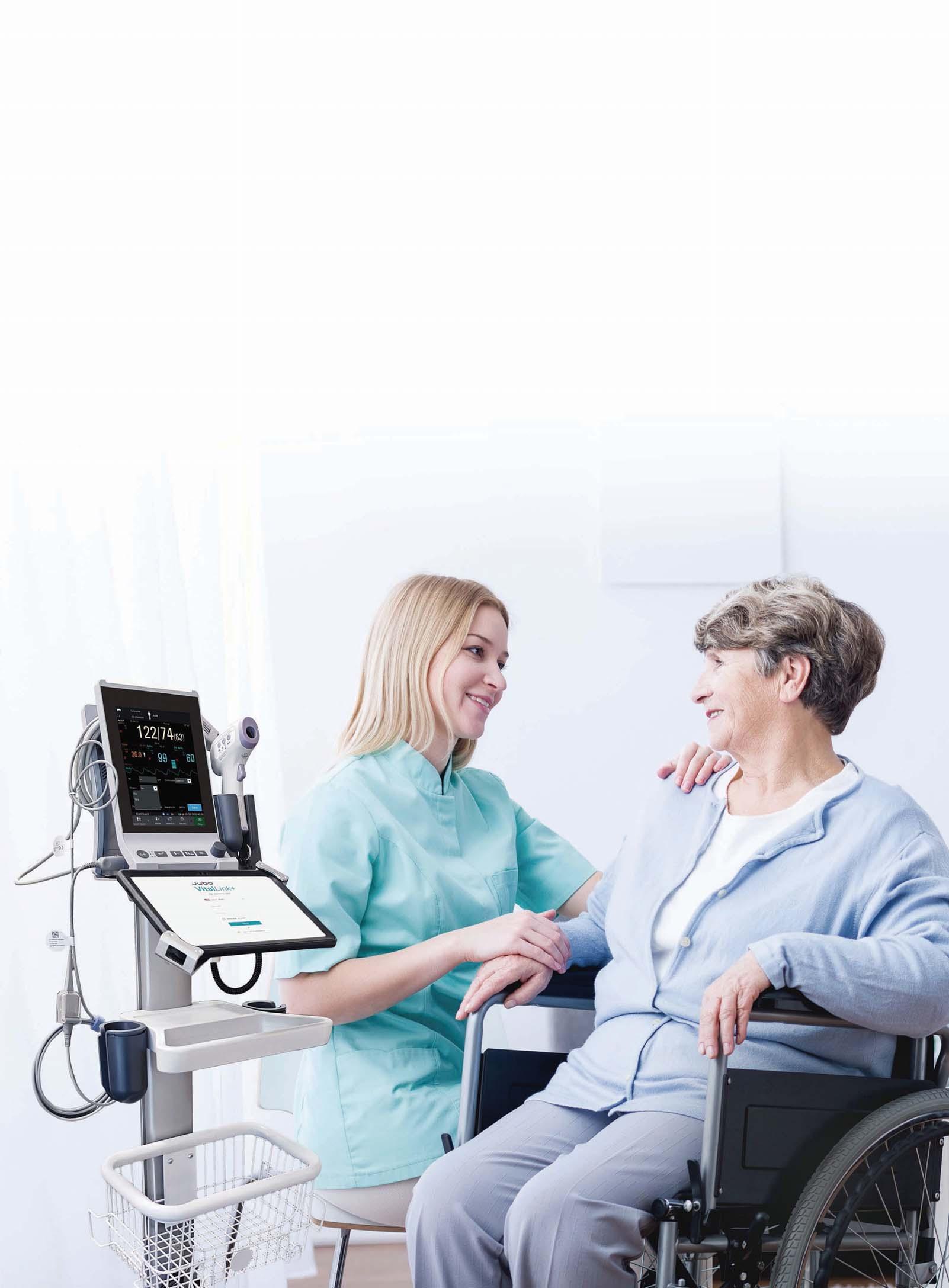
For more information, visit bit.ly/edan-allink
LONDON, ONT. – Mixed reality is being introduced to patient care at London Health Sciences Centre (LHSC) through an innovative research project. Supported through LHSC’s Academic Realignment Initiative Awards, the technology is currently being tested to improve patient outcomes in interventional radiology procedures.
First introduced in 2022, LHSC recently announced 15 additional research and quality improvement projects that will be supported through the Academic Realignment Initiative Awards with more than $1 million in funding from London Health Sciences Foundation and Children’s Health Foundation.
“These Awards reflect LHSC’s commitment to embedding research and learning throughout our operations,” said Cheryl Litchfield, senior director of Research Operations, LHSC. “These new projects will help strengthen patient outcomes by enhancing surgical procedures, optimizing imaging technologies, and elevating treatments for a wide range of conditions. We are seeing incredible results from our first round of awards, including the testing of mixed reality in interventional radiology.”
Jonathan Collier, an interventional radiology technologist at LHSC, was among the first group of recipients and saw an op-

portunity to optimize the use of innovative imaging technology through a growing partnership with Siemens Healthineers.
One focus of his research is the use of mixed reality technology in angiography suites, which are used to provide minimally invasive surgeries. Interventional radiologists diagnose and treat many conditions using minimally invasive procedures, including placing stents to open blocked blood vessels. These procedures typically
require a stationary 60–inch monitor, which can be restrictive to the care team.
Collier collaborated with Dr. David Hocking, diagnostic and interventional radiologist at LHSC, to pioneer the use of the Microsoft HoloLens in interventional radiology. The HoloLens is a mixed reality headset with see-through holographic lenses that allows users to consult crucial imaging through holograms while remaining aware of their physical sur-
roundings and maintaining closer contact with patients.
“As advancements in angiography introduce more images and data for physicians to make informed decisions, large display monitors occupy a considerable amount of tableside space, which puts a wall between the healthcare workers and the patients,” explained Collier. “Mixed reality technology enables healthcare teams to continue to focus on the patient while maintaining access to the most advanced images.”
The team hopes the technology – which is being paired with software developed by a team led by Collier and Dr. Hocking –will allow patients to feel more connected to their healthcare providers while improving patient safety. Studies have shown that physicians needing to turn away from the patient to view a monitor can reduce accuracy. The HoloLens allows the physician to keep the imaging data and patient in the same field of view with the goal of improving patient outcomes.
“This technology has the potential to change the future of interventional radiology,” said Collier. “Through support of LHSC’s Academic Realignment Initiative Awards, we are testing leading-edge innovation that can improve the delivery of care for our community and is already attracting interest from other healthcare organizations.”
Ontario’s privacy laws are in need of an update, U of T panelists sayBY JERRY ZEIDENBERG
TORONTO – Ontario’s health privacy legislation – the Personal Health Information Protection Act, or PHIPA for short – was designed to protect patients. And in that respect, it works, keeping patient data secure. However, in an era when data is becoming so important, and sharing data can save lives, perhaps the legislation is too strict.
Created in 2004 – before the emergence of the iPhone in 2007 – it’s probably time to for a refresh.
That was the conclusion of a panel at the Future of Health Leadership, Informatics and Policy (FHLIP) conference in February, held at Hart House on the University of Toronto campus. The daylong event was organized by Dr. Karim Keshavjee and Dr. Abbas Zavar, who both teach in the health informatics program at the university.
PHIPA maintains that whoever is treating a patient, whether it’s a family doctor in a clinic or an acute care hospital, that organization cannot share the records of the patient without express consent of the patient. The care provider becomes the ‘custodian’ of the data.
While PHIPA works well to protect the patient’s data, it has unfortunately stymied progress in the development of new technologies that didn’t exist when the law was created, such as artificial intelligence. AI relies on large data sets to train itself, but those data sets aren’t readily available to researchers, let alone
private-sector companies, in Ontario.
“The data is siloed,” said Fahreen Walimohamed, implementation manager for OnCall Health, who moderated the panel. “We are unable to aggregate it for AI, for example, to create new solutions.
There are a few, select research agencies that are allowed to work with the patient data, but not to share it. These include the Toronto-based Institute for Clinical Evaluative Sciences (ICES), which analyzes Ontario’s patient data to detect trends and new developments in health and sickness.
However, if ICES researchers find that certain patients are at risk of a disease –such as kidney failure – or that treatments they’re using might cause harm instead of curing them, they’re still not allowed to contact the patients or their care providers.
“We recently issued a report that advised the government on updating PHIPA, so that we’re allowed to contact patients if they are at risk of a disease in the next few years,” said Mahmoud Azimaee, director, Data Quality and Information Management at the Institute for Clinical Evaluative Sciences (ICES). “Currently, with PHIPA, you can’t do this.”
Azimaee noted that it’s not just researchers using advanced technologies like generative AI that require access to data. “Traditional analytics is enough,” he said, to cull new insights from the data. And some of the findings should be shared.
Recognizing the need to re-engineer the health data laws, ICES issued a report last year called “Modernizing On-
tario’s Personal Health Information Protection Act: Recommendations for a Data-Driven Health System.” Currently in Ontario, there are four “prescribed entities” that are entitled to conduct population-based analytics without obtaining patient consent. These trusted organizations are the Canadian Institute for Health Information (CIHI), the Pediatric Oncology Group of Ontario (POGO), Ontario Health, and ICES.
Of course, by providing access to patient data without consent, the act expects the four prescribed entities to carefully guard the information. As part of
Under PHIPA, researchers aren’t allowed to contact patients, even if they discover the patients to be at risk.
this, they must have their privacy practices reviewed by the provincial privacy commissioner every three years.
But strict guardianship of the data sometimes has unexpected consequences, and sometimes backfires by harming patients instead of protecting them.
For example, Ontario Health operates a program called MyPractice that generates reports for physicians that help them improve their practices.
ICES provides de-identified data related to opioid prescriptions for use in MyPractice reports and can determine whether a patient is receiving opioids from more than one doctor. However,
under the current regulations, ICES isn’t allowed to tell the physician which patient it is. ICES is asking for a change in PHIPA, allowing doctors to be informed in such cases about their patients and opioid overuse – something that could dramatically improve the health of certain patients and even save their lives.
Somewould like to see broader access to health data, so that other organizations could make use of the information for the public good – such as groups of hospitals conducting R&D or even private sector companies.
Christine Sham, director, Information Management Strategy and Policy at the Ministry of Health, asserted that “people are frustrated by the slowness of government in keeping up with change.” She said that health data needs to be used for the greater good, and that it will be necessary to dialogue with the public to find out if it’s ready to allow a broader range of entities have access to its data. “We need to understand what the public wants,” she said.
Don Willison, adjunct professor at the Institute of Health Policy, Management and Evaluation, University of Toronto, suggested that experimentation with patient data sharing – through privacy sandboxes – could help establish new boundaries for privacy and security.
Such experiments could determine what types of organizations should obtain access to patient data, what kinds of data should be shared, and whether it should be anonymized or rendered into “synthetic data” to protect individuals.
rtificial intelligence (AI) is revolutionizing the way medical professionals deliver care and manage patient data.
By harnessing the power of advanced algorithms and machine learning, AI applications contribute to more accurate diagnostics, personalized treatment plans and streamlined administrative processes. The integration of AI into healthcare is helping create a paradigm shift in the industry toward a more datadriven and patient-centric approach.
Erasmus University Medical Center, the leading university medical centre in the Netherlands, is embracing the power of data and AI for improved patient care. Partnered with SAS and Microsoft, Erasmus is implementing data-driven applications across the hospital, preventing complications and optimizing the use of operating rooms, intensive care units and beds.
Dr. Michel van Genderen, internist-intensivist at the Erasmus MC, is helping bring together disciplines from across the hospital to collaborate on AI model devel-
opment, provide technical support for implementation and help with data innovation and ethical issues. In this Q&A, he discusses how Erasmus MC uses AI to improve patient care and increase productivity.
What does trustworthy AI mean to you?
Dr. van Genderen: Trustworthy AI means that we have AI that is safe and explainable. In the end, the AI model does not harm patients. In order to facilitate that we must move away from the ‘black-box’ AI models and must shift to explainable AI throughout the AI lifecycle. An important facet of this process is to test data and models on bias before implementing them for clinical use. Trustworthy AI improves the quality of life and quality of care for everyone – for every human being, for every patient.
Can you share an example of how Erasmus MC is using AI?
Dr. van Genderen: One example is the decubitus model (an AI algorithm) we produced to predict pressure ulcers in the in-
CONTINUED
using advanced ideas and technologies.
As Dr. Knight noted, those researchers are already working at the cutting-edge of medicine. For example, researchers are using 3D bioprinting technology to take tissues from patients – with permission – and to culture these tissues on 3D scaffolds. The cultured tissue can then be tested with a variety of drugs.
Not only will this accelerate the process of clinical trials, but it will also potentially identify patients who may not respond to new medications, or do so but with adverse side-effects.
“We’re using the patient’s tissue, rather than the patient,” said Dr. Knight.
In other instances, the researchers are using patient data in addition to the biospecimens. “We’re going to be taking a deep dive into phenotypes,” said Dr. Knight. “We’ll be looking at ‘omics’, such as proteomics, metabolomics, lipidomics. By collecting data about the various ‘omics’ , researchers can simulate how new and old drugs will work with at the individual patient level.”
He added, “We can use this in cancer research, to see individual characteristics and which medications effective, and which ones are not.”
These computational technologies will be married with the latest imaging technologies to give researchers and clinicians new information for patient care and the development of novel therapies.
Together, these techniques will discover what works for individual patients faster than ever before.
The recent advances in generative AI will also be used, but Dr. Knight says researchers will be able to harness it even further. “Generative AI can predict who will have a heart attack in 20 years from now, but it doesn’t necessarily tell you how or why,” he said.
“As researchers, we want to know the

tensive care unit. We use the model to reduce the nurses’ workload. On the one hand, the model improves the quality of care because we can predict patients who are at increased risk of getting pressure ulcers. And on the other hand, we have lowered the administration rate for the nurses because we automated the prediction.
What do you see as future opportunities for AI transformation in healthcare?
Erasmus MC done to be more resilient in the face of disruption? And how have data and analytics played a role in that?
Dr. van Genderen: One example is the DataHub. That’s a physical place in the hospital where relevant stakeholders (patients and their families, data scientists, etc.) can come together to share knowledge, formalize our data approach, and ensure we are adding value using analytics and artificial intelligence in the clinics.
How are you using AI and data to improve productivity at Erasmus?
Dr. van Genderen: In our organization, we talk a lot about AI. It makes some healthcare professionals anxious. They are afraid AI will change their job – and it will. AI will make them more efficient by automating the tedious, frustrating administrative work that takes them away from patients. So that tackles your question about increasing productivity from a clinical perspective, but there is also a data perspective.
Trustworthy AI means that we have AI that is safe and explainable. In the end, the AI model does not harm patients.
how and why. Using a multi-omic approach, together with advanced imaging, we’ll be able to answer these questions.”
On these questions, and many others, researchers and clinicians in this innovative structure are set to make a significant impact. “The CSRC will be a nexus for people to come together and answer the increasingly complex medical questions posed by the patients we serve,” said Dr. Knight. “What we do here now, will echo throughout the generations.”
Dr. van Genderen: Our healthcare system faces two critical challenges: a shortage of personnel and increased healthcare demand. The true test will be figuring out how to tackle these problems in such a way that you increase the quality of care for the next 10, 20 – maybe even the next 50 –years through investments in data and technology.
There have been many unforeseen disruptions over the past few years. What has
Dr. van Genderen: By using analytics in such a way that we can understand the true value of the data, we can improve our quality of care, come up with better care solutions and work more efficiently. So, from a data perspective, Erasmus MC is working to make data and analytical insights more scalable and understandable for our healthcare professionals. AI will transform healthcare and ensure that we keep healthcare professionals in healthcare.
Originally published on SAS Voices.
Ferrum Health, a U.S.-based health technology company with a novel approach to AI deployment and validation, is poised to enter the Canadian market. Working alongside GE HealthCare, it has pitched its technology for use with the Canadian Association of Radiologists’ (CAR) proposed national, clinician-led AI validation platform.
Until a few years ago, most health systems acquired AI applications by going direct to AI vendors, noted Austin Deer, head of strategic partnerships with Ferrum Health. That proved to be cumbersome because health systems would end up with multiple vendors, imposing a heavy burden on clinicians, business leadership, procurement, legal and IT.
Ferrum Health’s enterprise AI deployment platform functions as an intermediary and a single point of contact, dramatically streamlining the deployment of AI. It currently has a catalog of over 50 AI applications spanning most of the major specialties. It also includes software for validating and monitoring how the applications perform on an individ-
ual health system’s patient population.
“Most AI applications are approved by the U.S. Food and Drug Administration based on particular datasets, but we found there was a need for clinicians to trust the tools, to understand where they perform well and where the blind spots are,” said Deer. “In order to do that, you need to be able to validate the
Ferrum Health currently has a catalog of over 50 AI applications spanning most of the major specialties.
applications and determine how they perform on the local population.
“For example, we will take 30, 60, or 90 days of chest X-rays and push them through an application retrospectively before the tool is commercially deployed to confirm its performance on a health system’s own datasets.”
Ferrum uses its own proprietary language classifiers to compare the radiologist’s own reports with the results from the AI application in order to identify
instances of discordance. In the absence of Ferrum’s automated validation, health systems would have to use teams of residents and data scientists to manually tag the reports.
“With our automated validation, we can run tens of thousands of studies through our validation engine and output exactly how the applications performed without the involvement of clinicians and data scientists,” said Deer.
Customers can select the applications they want from Ferrum’s catalogue, but because the platform is deployed behind the health system’s firewall, additional apps can be turned on with ease. This gives a health system the opportunity to retrospectively validate multiple algorithms to learn which ones perform best before making a commitment to acquire them.
According to Deer, Ferrum’s platform is significantly more cost efficient than acquiring AI applications directly from vendors, and because it’s locally deployed, no protected health information leaves the health system’s firewall, ensuring data security and privacy.
Ferrum Health’s AI platform is currently installed in 170 sites across the U.S.
VICTORIA, B.C. – Island Health, a health authority delivering care to almost 900,000 people – including 50 First Nations communities – is working on introducing a new program called Hospital at Home (HaH), a move that would extend the Oracle-Cerner EHR platform known as Millenium outside of the traditional healthcare system.
Millennium is used by care teams across the healthcare continuum to document and access critical patient data and to help with patient safety. All patient information is updated in real-time, and clinicians can securely access the right information whenever and wherever it’s needed.
“We’re working on connecting the entire Island, including 12 acute care sites and our Long-Term Care clinical areas on Millennium,” said Dr. Sean Spina, regional manager, Clinical Pharmacy Services at Island Health.
Now, the system is reaching into the homes of patients through the HaH program.
HaH launched at the Victoria General Hospital in November 2020 and expanded to the Royal Jubilee Hospital in March 2021. It is currently a one program, two-campus model. However, there are plans to expand to other locations on Vancouver Island.
Although it may sound like a new concept, Hospital at Home is an innovative care model that’s been in practice for over 25 years in several countries around the world, including Spain and Australia. It provides acute level care in a patient’s own home and differs from community care services in that it provides a level of care that would traditionally require a hospital admission.
“Initially it was implemented at Island Health to alleviate pressures on healthcare systems by increasing hospital capacity,” Spina explained, “however, over the years it’s been recognized as a patient-centred care model preferred by many patients.”
“The technology being used to monitor patients includes remote patient monitoring kits, BP machines, oxygen saturation finger probes, scales, and thermometers,” said Tara Mulcaster, program manager of Hospital at Home at Island Health. “The data is transmitted to an independent platform that nurses monitor and then download into the Oracle-Cerner EHR.”
Call4Care, a wearable medical alert pendant, keeps patients connected to members of the care team. The pendant also includes falls-detection technology.
Zoom is used to connect the patient to clinicians via an iPad. The iPads are utilized for both physician and nurse checkins via the Vocera Collaboration Suite – an application that can respond to changes in
a patient’s health and quickly collaborate with the entire care team.
The HaH care model puts patients and caregivers at the centre of care by bringing medical expertise, technology, and personalized care into a patient’s home. Patients are eating their own food, sleeping in their own beds, closely supported by family and caregivers, pets, and other home-comforts that supplement medical care.
“This is perceived to empower the patient, improve the care experience and quality of life, and speed recovery. Moreover, re-
Over the years, HaH has been recognized as a patient-centred care model that is preferred by many patients.
ceiving care at home lowers the risk of hospital acquired illness such as infection and delirium,” said Spina.
All patients in the HaH program receive a daily in-person visit from an RN – at minimum. Those requiring additional support receive more frequent visits. Physicians see patients in person on admission and when required during their stay.
Asked how the program got started, and why, Spina explained, “the population on the Island is on the rise, and to adequately
treat all these patients you need more hospital beds. Our hospitals are routinely over capacity, and some of our patients are waiting in hallways. There had to be a better way – our leadership team looked at ways to deliver care outside the traditional hospital.”
The patient care teams available to treat patients at home include:
•registered nurses
•clinical pharmacists
•clinical and diabetic nurse educators
•occupational therapists
•registered dieticians
•rehab assistants
•hospitalist physicians
•speech and language pathologists, and
•virtual care specialists.
Clinicians initiated the program back in 2019 and have been working on collecting all the data to be integrated into the Oracle-Cerner EHR. The next step will be preparing the evaluative framework, learning more about the current health system and changing the practice, going from siloed to meaningful data, and improving patient outcomes.
“Presently, we’re investigating the integration of automated medication dispensing devices, and continuous monitoring wearables,” said Spina.
Getting Hospital at Home off the ground came with various challenges. First,


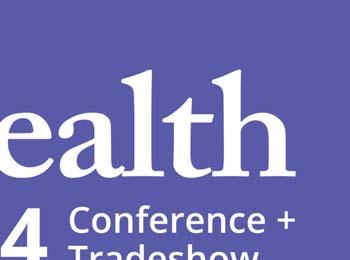







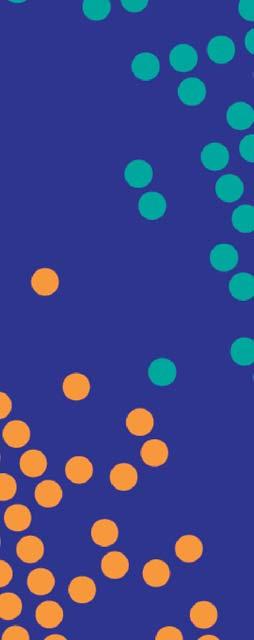
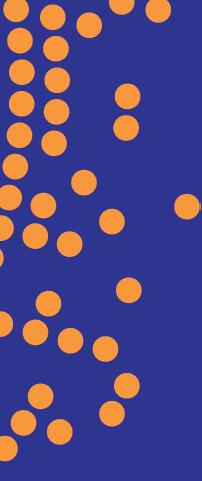
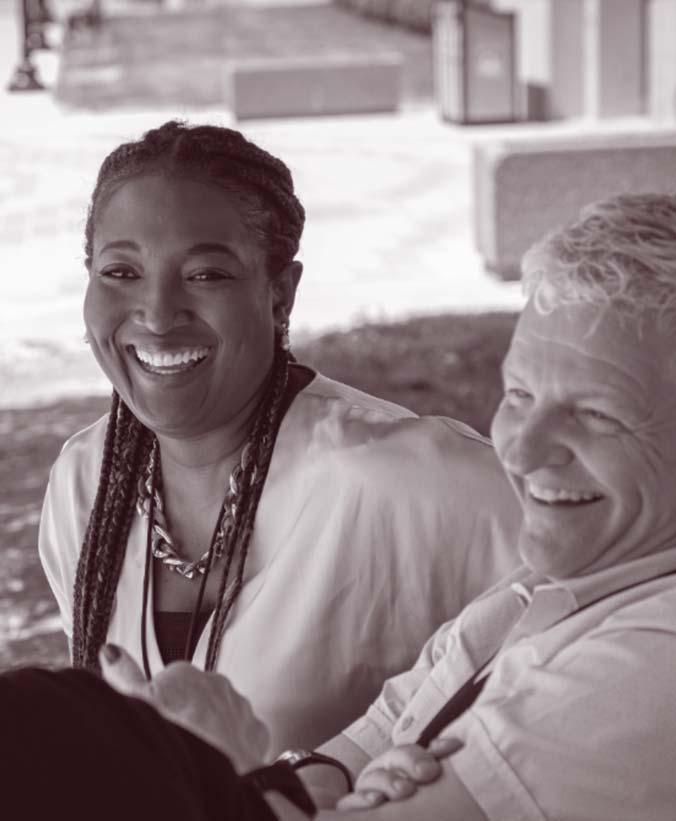

TORONTO – In February, a group of academics at U of T held a day-long session examining healthcare leadership and policy issues. Called FHLIP, short for the Future of Health Leadership, Informatics and Policy, the event was organized by Dr. Kareem Keshavjee and Dr. Abbas Zavar. Both teach in the university’s health informatics program.
To kick off the day, ‘recovering’ Ontario health minister Deb Matthews, PhD, gave an entertaining –and illuminating – address on why Canada’s healthcare system doesn’t perform so well.
“It should be much better than it is,” she began. Matthews cited the New York-based Commonwealth Fund’s studies on international health systems.
“We’re better than the U.S., but the U.S. is number 11 out of 11 countries. Canada is number 10.”
She explained that it’s not about the money, as Canada spends more or equal amounts per capita compared with nations like the UK and France. Rather, it’s about creating systems that produce more bang for the buck.
Indeed, she noted the UK is number one in most of the rankings; if we want to improve, we should emulate what they are doing, instead of watching our neighbors to the south so closely.
The Commonwealth Fund measures factors like universal medical coverage, including pharmacare; access to care; and things closely related to health, such as social services and homelessness.
Canada doesn’t score high in these areas, but she did mention one bright light: outcomes, including cancer care results.
Matthews warned that things are likely to get worse, with the arrival of the ‘grey tsunami’, the aging Baby Boomers [the postwar generation born between 1946 and 1964.]
Former Ontario health minister Deb Matthews“People don’t understand demographics,” she said. “As [demographer] David Foot said, demography explains two-thirds of everything. And we are very illprepared for this demographic challenge.”
The current system is designed for episodic care, not chronic care – which would benefit the aging Boomers. In the past, people have often relied upon
Why not just change the system and fix it? “Never underestimate the power of inertia. Healthcare is highly resistant to change,” averred Matthews.
family for care. But as Matthews put it, “My mom had six kids, I have three, and they will have less.” There are going to be fewer family doors to turn to.
The social determinants of health, she said, “are grossly undervalued.” But poverty, homelessness and illiteracy have a huge impact on society. Why can’t we give everyone a warm place to stay and enough to eat?
Matthews observed that putting someone in a hospital bed costs roughly $1,000 a day, a jail cell costs $500 a day, a shelter bed costs $300 per day, and supportive housing is $100 per day.
“Knowing that, where should we put our money?” she asked. “Seems we should put it into supportive housing.”
Well, why not just change the system and fix it? Matthews asserted, “Never underestimate the power of inertia. Healthcare is highly resistant to change.” She noted that when Medicare was introduced in Canada, doctors fought the upcoming legislation, even though they would still get paid.
On the systemic level, she said, “Government budgeting sucks.” The government does a poor job of tracking performance of various programs. “We need to do a better job. We need to stop funding programs that don’t work, so we can fund those that do.”
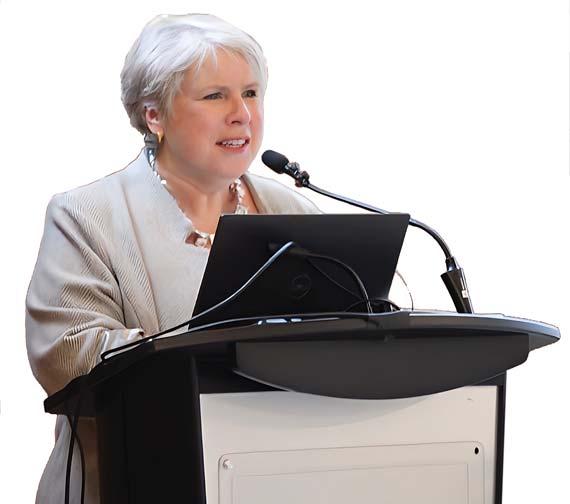
Matthews explained that government officials go through new programs line by line, but if you have a great idea to save money, only the costs are included in the analysis – not the savings. “That’s why it’s been so hard to deal with homelessness. We know how to do it.” But initially, it will cost more money than it will save.
One solution that seems to work, Matthews said, is shedding more light on the internal workings of hospitals and clinics. She cited the case of posting surgical wait times, showing for example, where you could get a hip replacement the fastest.
The public could clearly see that if the wait was six months in London, Ont., and six weeks in nearby Owen Sound, it was better to go to Owen Sound for the procedure. “Sunshine successfully shortened wait times,” said Matthews.
While railing against policy and programs, Matthews did have glowing things to say about people working in the system. “People working in healthcare are dedicated to patients. During COVID, they masked up and gowned up and risked their lives.” And not only the frontline workers, but the administrators, too. “They are all wonderful,” she said.
Doctors are the heart and soul of healthcare, tirelessly working to heal and care for others. But to mend their patients, they must first heal themselves. In the vast landscape of Canadian healthcare, an alarming issue looms large – burnout among healthcare professionals, particularly family doctors.
This growing problem is driving a shortage of family physicians, leading to decreased accessibility and compromised patient care.
This topic hit close to home for me when my own mother, a dedicated doctor, experienced burnout and was forced to retire at the age of 45. Witnessing her struggle and the
toll it took on her passion for medicine compelled me to delve deeper into this issue.
Too many doctors retire prematurely every year in Canada due to burnout and the increasing burden of administrative tasks and patient care. One of the profound consequences of this burnout crisis is the severe shortage of family doctors in Canada.
A significant indicator of this shortage can be seen in the decreasing number of medical graduates choosing family medicine as their specialization. In 1998, 32 percent of medical graduates opted for family medicine, while in 2016, this number had plummeted to a mere 18 percent.
The allure of owning a private clinic and serving as a family doctor
has lost its luster in recent years, contributing to the decrease in family medicine graduates. The burden of managing administrative tasks, patient care, and other responsibili-
My own mother, a dedicated doctor, experienced burnout and was forced to retire at 45.
ties has left many doctors feeling overwhelmed and disillusioned with the profession.
Recognizing the pressing need for a solution, Docere Health emerged as a beacon of hope for beleaguered healthcare professionals. As the CEO
and Co-founder of Docere Health, my journey into this venture was fueled by a desire to alleviate the burden faced by doctors, providing them with tools and support to combat burnout. Our platform operates on the fundamental belief that doctors should be able to devote their time and expertise to treating patients, rather than being bogged down by time-consuming administrative tasks and paperwork.
To achieve this, we have developed a centralized dashboard that streamlines various aspects of a doctor’s practice, making it easier for them to manage their workload efficiently. The platform provides doctors with easy access to critical pa-
Canada’s healthcare system is at a tipping point, and we have a true moment in time to revolutionize patient outcomes for the better, while reducing the burden on the front lines of our healthcare system.
Right now, healthcare providers and patients are stuck in a growing backlog within a well-intentioned health system. Complex inefficiencies and a lack of system-wide interoperability has resulted in administrative silos that take frontline healthcare providers away from patients who truly cannot afford to wait.
Innovative technologies have the power to enhance healthcare solutions, including more efficiencies, personalization, and health data portability. The intersection of artificial intelligence (AI) and healthcare solutions has rapidly become a focal point in the journey to enhance proactive care.
Indeed, when harnessed appropriately, AI can be a powerful tool to address the challenges that Canada’s healthcare system is currently grappling with.
 Michael Green
Michael Green
The real promise of AI lies in its ability to empower care providers with important data that can enable a more proactive approach to care. This marks a significant step towards personalized and proactive medicine, where treatment plans and electronic medical records can be dynamically adjusted based on real-time health data and used to identify health conditions preemptively. When applied appropriately, the implications of AI can be life-changing, offering a pathway to more proactive, effective, and targeted interventions.
Pending publication, Canada Health Infoway’s 2023 Digital Health Survey results suggest that 9 in 10 Canadians feel it is important that healthcare providers develop and implement technology innovation plans to improve healthcare outcomes. As well, 85 percent feel it is important that Canada does not fall behind other countries in adopting healthcare technology.
Looking to international examples, like Sweden and Finland, AI solutions are being deployed to aid healthcare providers in the early detection of cancer. These applications leverage AI algorithms to analyze medical imaging data, such as mammograms or CT scans.
By detecting subtle patterns, these AIdriven tools assist healthcare professionals in identifying potential cancer cases at an earlier and more treatable phase. This not only enhances the efficiency of cancer diagnosis but also improves patient outcomes and survival rates.
In addressing the Health Human Resource (HHR) shortage, AI can serve as a force multiplier – not replacer – increasing the capacity of healthcare professionals. In finding synergies between human skills and AI functionalities, we have the potential to bridge the gap of rising healthcare
demands and the limited workforce, ensuring that quality care remains accessible to all Canadians. Ultimately, these interventions allow care providers to spend more time with patients.
Healthcare providers are also invested in the ongoing dialogue about the integra-
tion and possibilities of innovative technologies, like AI, across our health system.
We’ll be sharing data and insights from nurses on the use of innovative technologies, including AI, via Canada Health Infoway’s 2023 Canadian Nurses Survey, in partnership with the Canadian Nurses As-
sociation (CNA) and the Canadian Nursing Informatics Association (CNIA).
After an early preview, it’s clear that healthcare providers are eager to explore how AI and other innovative technologies can enhance patient care and streamline








They’ve already used AI to create a medical charting service and enhance patient journeys through the ED.
BY DIANNE DANIELFor centuries, hospitals have started the day with medical rounds to share valuable information among care teams. Now a new format has been added to the mix at Canada’s largest health network: the AI round.
Following the launch of an artificial intelligence (AI) hub at Toronto’s University Health Network last fall – a collaborative centre led by UHN chief of innovation Dr. Shaf Keshavjee and UHN chief AI scientist Bo Wang, PhD – clinicians have welcomed a monthly forum as an opportunity to discuss rapidly evolving trends and to learn how emerging AI applications are being applied to healthcare.
Often featuring AI leaders as guest speakers, the educational rounds are just one aspect of the hub’s multi-pronged vision to continuously advance AI technologies through best practices, partnerships, research, education and ultimately, the commercialization of health AI solutions.
“Whether you like it or hate it, AI is here and will stay for a long time,” said Wang, who became the first chief AI scientist at a Canadian hospital when he assumed the role at UHN in September 2023.
Expanding UHN’s AI hub is a key priority for Wang as he works to bridge the gap between computer science and medical science. He says the ability to bring computer scientists and clinicians together to solve burning issues in healthcare is the “secret sauce” that is enabling the research hospital to forge AI collaborations with good preliminary results.
One example is the InsighTx model, a predictive technique for determining whether donor lungs are suitable for transplantation. As the inventor of ex vivo lung perfusion (EVLP), a medical technique that enables a donated lung to be preserved outside of the human body for assessment, UHN experts needed a way to standardize and automate suitability guidelines to help clinicians make accurate assessments about donor lungs when performing transplants.
“First of all, Canada has a shortage of donor lungs,” explained Wang. “Second, even among that shortage of donor lungs, only 20 percent get used, meaning 80 percent get discarded for a variety of reasons, the biggest being that not every clinical expert understands how to assess the quality of the lung.”
tion rates.” The model is currently being tested and refined within the UHN lung transplant program with the goal of broader deployment in the future.
Another early project spearheaded by the UHN AI Hub is working to develop a first-of-its-kind opensource healthcare-focused chatbot called the Clinical Camel as an alternative to OpenAI’s ChatGPT.
A homegrown language model which fine-tunes Meta’s free Llama AI programming tool, the chatbot is expected to bring stability and version control to clinical applications, and to safeguard patient sensitive data within Canadian borders.
“ChatGPT always changes versions,” explained Wang. “That lack of stability is okay for writing an essay or recognizing images, it’s not okay to help with clinical workflows … You don’t want a model that says this patient is safe today and the next day, no they’re not safe.”
One of the first applications of the Clinical Camel is automated clinical note summary. The chatbot is embedded in a microphone so that it can listen, with consent, to a patient-doctor consultation and then generate an accurate, concise clinical note at the end. The intent is to free clin-
When the program launched in 2017, one of their biggest challenges was finding access to Canadianspecific health data.
Fast-forward seven years, and their pressing concern now is how to scale innovative health AI solutions in a “standardized, reliable way within a larger framework of trust and safety,” said Vector Institute chief data officer and vice-president, health, Roxana Sultan.
“We want to make sure that whatever is getting deployed in the Canadian health system has been, in some way, shape or form, coordinated, vetted, reviewed and reliably implemented across settings in a standardized way, and that’s easier said than done,” she said.
The institute is currently in conversations with government stakeholders about what health AI policy and regulations might look like. Some of the questions being examined include: How do we make sure models don’t deteriorate over time? How do we make sure they don’t exacerbate existing biases? How do we ensure they will perform effectively when applied to the general patient population?

icians from the mundane task of charting at a time when burnout is reaching unprecedented levels.
To help test the generalizability of AI models, the institute has developed an AI evaluation framework called CyclOPs. One of the goals is to monitor machine learning models over time as they perform, to watch for degradation in data that could impact their accuracy.
Like Wang, Sultan believes AI is here to stay in healthcare. She often draws a parallel between AI and the Internet or electrical grid: they are things in and of themselves, but they also enable everything around them.
“Everything is increasingly being powered by AI-enabled tools, so we can’t think of AI as a separate line that creates its own structures and entities,” said Sultan. “It is being embedded into everything we do … the potential we are standing on the edge of right now is astounding, and it’s more a question of how quickly we can go, than whether or if we go.”
The pilot project approach is working, she added, by helping clinicians to understand at a tactical level what integrating AI into healthcare actually looks like. Patients and providers are getting more comfortable with the technology and are seeing results which fuels adoption.
To solve the problem, researchers analyzed data from more than 700 EVLP cases, using biomarkers, imaging and physiology data to train their model to make accurate predictions. A real-world evaluation was then conducted to compare assessments made with and without the aid of InsighTx, demonstrating that when they used the model to guide them, clinicians were more likely to get it right.
“Because of this model, we can increase the utilization rate from 20 percent to almost 50 percent, saving more lives,” said Wang, calling the project a “great example of clinical innovation with AI to improve accuracy of predictions and resource utiliza-
Eventually, researchers will take the technology one step further, adding decision support to aid in diagnosing conditions or facilitating automatic billing, for example. Clinical Camel is currently undergoing a trial at the Peter Munk Cardiac Centre and Wang says he’s hopeful the technology will scale rapidly to alleviate the burden of charting on a wider scale.
“If we want to deploy it beyond UHN, we need to figure out the privacy, legal and ethical aspects,” he said. “AI is developing so fast, people may own the core innovations but how we deliver that innovation to the bedside to help patients is still a long process.”
Toronto-based Vector Institute is working to drive AI innovation through partnerships and programs, funded at both the provincial and federal levels.
As an adjunct professor with the Institute of Health Policy, Management and Evaluation (IHPME) at University of Toronto, Sultan also teaches graduate-level courses on intelligent medicine, machine learning and knowledge representation. She said an increasing number of her students are practicing clinicians who are looking to build their AI skills.
“We’ve really gotten the message across that this is to augment and support your work, it is not to replace you,” she said. “I’ve been in the healthcare field for over two decades and I’ve never seen adoption and change happening at this pace. It’s pretty spectacular to see.”
After a two-year research and development phase that generated great success with several pilot projects in the emergency department at The Hospital of Sick Children (SickKids), Toronto-based Hero AI is
now offering its AI platform as a commercial software-as-a-service offering.
In addition to providing predictive dashboards to help manage patient volumes in busy emergency waiting rooms, the platform also supports operational alerts that rely on streaming electronic health record data in real time.
“We identify patient bottlenecks in real time and make sure the right patient is being seen at the right time,” said Hero AI co-founder and CEO Dr. Devin Singh, who practices as an emergency physician at SickKids and serves as co-lead of the hospital’s AI in Medicine for Kids (AIM) initiative. “It’s pretty powerful how AIenabled automation is really driving impact and improving patient safety,” said Dr. Singh.
The platform comes with the Beacon mobile app, available in both providerand patient-facing versions.
On the provider-facing side, an alert can identify high-risk medical and surgical patients as they arrive at the ER based on vital signs, past medical history, demographic details and free text clinical notes, and then suggest a tailored action plan.
If a child presents with a potential condition that requires an ultrasound for diagnosis, for example, the app will alert the care team if an hour passes and no ultrasound has been conducted – resulting in a 28 percent reduction in time spent waiting for ultrasound for potentially critical patients.
Recently, SickKids expressed an interest in improving wait times for mental health patients arriving at the hospital in crisis. Using natural language processing tools with other AI modelling techniques to model the real-time triage data, the platform now identifies patients in crisis and sends an automatic alert to psychiatry.
“Even before the patient is seen by an emergency room physician, psychiatry comes down, meets the youngster and gets them the psychiatric care they need, all in an automated way,” explained Dr. Singh. “It really reduces the time from when patients arrive with mental health crises to when they actually see the psychiatrist and we’ve dramatically reduced the length of stay for these patients in the ER department, as well.”
The patient facing version of Beacon is a personalized patient dashboard that was rolled out last fall. To develop the app, researchers engaged with patients and their families as they were waiting to be seen in the SickKids emergency department. One of the most common complaints they heard was that patients felt they had been forgotten and feared losing their place in line if they left the waiting area to use the washroom or grab a bite to eat.
The dashboard tells them at a glance how many patients are ahead of them in the queue, how long they can expect to wait and how long they’ve waited.
Behind the scenes, AI algorithms process the triage notes to understand the reason for their visit and the app then sends personalized health education content to their personal inbox. For example, a parent whose baby is presenting with abdominal pain and constipation will receive health literacy about constipation; a parent whose child is spiking a fever will
receive information about the red flags associated with fever.
“The goal is to help in the moment to improve patient literacy so that when they do interact with our care providers, they have a more enhanced experience,” said Dr. Singh.
As Hero AI looks to scale, a key advantage is the platform’s flexibility. The company encourages users to conduct design workshops so they can get to the root
cause of the problem they are trying to solve and adapt the technology to address it. Smaller hospitals can purchase a single module, such as waiting room safety or the patient dashboard; larger health centres are more likely to lease the full clinical automation platform.
“The approach we’re taking is clearly resonating with people and I think it’s because we’re hyper-focused on patient
safety, the patient experience and the clinician experience,” said Dr. Singh, who, along with Wang and Sultan, is also advocating for regulatory reform in health AI.
“It may seem counterintuitive, but I think a little bit more regulation that creates a clear runway will really help industry spin faster and give hospitals a bit more confidence when they look to adopt AI solutions,” he said.
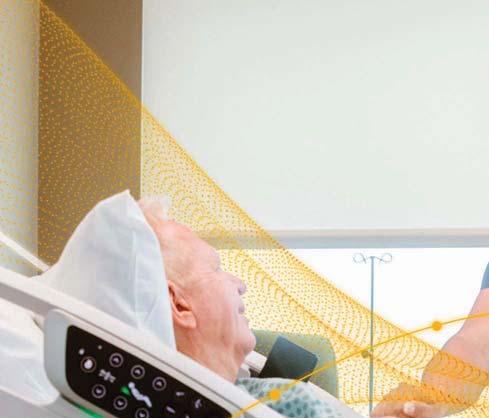












Many investors are new to the HEALWELL story. Can you talk a little about HEALWELL and its vision?
HEALWELL AI is a healthcare technology company focused on AI and data science for preventative care. Our mission is to improve healthcare and save lives through the early identification and detection of disease. Using our own proprietary technology, we are developing and commercializing advanced clinical decision support systems that can help healthcare providers detect rare and chronic diseases, improve efficiency of their practice and ultimately help improve patient health outcomes.
What is ‘preventative care’ and what role can AI play in preventative care?
Preventative care is the primary focus of HEALWELL, and it refers to the medical/healthcare measures taken for the early identification and detection of disease, illness or other health conditions. The earlier the detection, the greater the likelihood of treatment being successful. This is where AI comes in; AI can screen historical patient data to help inform physicians of markers for potential disease in patients earlier, helping to reduce detection time.
Why is AI so important for the future of healthcare?
Despite significant healthcare innovation, the COVID-19 pandemic has strained healthcare systems worldwide. Patients bear the brunt of this strain, experiencing increased wait times for primary and specialist care, leading to delayed diagnosis, treatments, and worsened outcomes. Early detec-
CONTINUED FROM PAGE 14
tient information, including medical history, test results, and treatment plans, all at their fingertips.
This centralized approach eliminates the need for doctors to toggle between various systems and paperwork, saving them valuable time and reducing the risk of errors.
To further enhance the efficiency of medical practices, we have integrated Docere Health with Electronic Health Records (EHR) systems commonly used in clinics and hospitals. This integration ensures a smooth flow of patient data, eliminating duplicate data entry and enhancing the overall practice management experience. Our dedication to tackling burnout extends beyond just automating administrative tasks. We understand that doctors need support and resources to effectively manage their workload and cope with the stresses of the profession.
Docere Health offers resources such as educational materials and support
tion is pivotal, reducing chances for missed diagnoses, enhancing physician workflow, and reducing healthcare system costs, ultimately saving lives. Statistics underscore the urgency of early detection. Late or misdiagnosis in the U.S. alone leads to nearly 800,000 deaths or permanent disabilities annually. AI-driven diagnosis could slash treatment costs by 50 percent and improve health outcomes by 40 percent, according to Harvard School of Public Health.
Recently you completed the acquisition of Intrahealth. Can you talk a little bit about Intrahealth?
Intrahealth is a leading provider of SaaSbased enterprise-class Electronic Health Record (or EHR) solutions, serving approximately 15,000 clinicians across Canada, Australia, and New Zealand. With a global network spanning small clinics to large healthcare delivery organizations, Intrahealth supports millions of patients with its suite of flexible software solutions.
After we completed the acquisition of Intrahealth, we announced plans to integrate our industry-leading AI tools with Intrahealth’s EHR platform, aiming to create a next-generation AI-powered EHR system. The synergy between HEALWELL’s AI capabilities and Intrahealth’s expertise in EHR technologies presents an unprecedented opportunity to revolutionize the healthcare industry.
What role do you think AI will play in health records?
In the realm of health records, AI is going to play a transformative role, revolutionizing how medical data is managed and utilized. Initially, the digitization of health records marked a monumental shift, transitioning from cumbersome paper-based systems to efficient electronic medical
networks to help doctors foster a healthy work-life balance and prioritize their well-being.
To illustrate the transformative impact of our platform, let us consider a real-life case study from one of our 170 clients, a clinic in Niagara Falls. The family doctor at this clinic was grappling with burnout, seeing a staggering nine patients per hour, leaving only seven minutes per patient.
By implementing Docere Health’s centralized dashboard and the integration done with their EHR, we automated referral processes, saving the doctor two hours each day.
This newfound time allowed the clinic to accept more new patients but also increase the time that the doctor spent with the patient from seven minutes to 14 minutes, increasing revenue while enhancing the quality of patient care.
One particular clinic was managed by a younger family doctor who had recently established his practice. Like many new healthcare providers, he found himself struggling with various operational aspects of his clinic.
Docere Health’s platform proved to

record (EMR) platforms. Today, AI is empowering healthcare providers with enhanced search capabilities, simplifying the retrieval of relevant data from structured EMR records. With AI-driven algorithms, physicians can swiftly navigate through clinical notes, enabling more informed decision-making and efficient patient care. AI can facilitate the identification and stratification of patients with rare, chronic, and complex diseases. HEALWELL has demonstrated success in screening EMR records using AI to identify at-risk patients, leading to proactive interventions and personalized treatment plans.
HEALWELL is an acquisitive company, having completed two acquisitions since inception in October 2023. What is HEALWELL’s acquisition strategy? How
be a game-changer for him, offering a comprehensive solution that empowered him to manage his clinic efficiently and provide better patient care. The heart of the solution was the centralized dashboard, that allowed the doctor to build the backbone of his clinic’s operations.
This included a range of features such
The automation processes implemented by Docere Health play a pivotal role in optimizing clinic operations.
as appointment scheduling, documentation management, business analysis, lab test tracking, and billing. This integration enabled the doctor to access critical information and manage various aspects of his clinic seamlessly and conveniently, even from outside the clinic.
Additionally, the automation processes implemented by Docere Health played a pivotal role in optimizing clinic operations. Starting from the moment a patient initiated contact, the automated intake forms and data collec-
does the future M&A pipeline look for HEALWELL?
We have a very full and active pipeline of acquisition opportunities. We are currently looking at acquisitions that fall into two categories: first, AI and data science companies that expand current capabilities and disease/therapeutic indications, and secondly, Technology and healthcare software companies that provide access to additional clinical information and mature recurring revenue.
Our largest shareholder is WELL Health Technologies, which owns and operates the largest network of primary care clinics across Canada. WELL Health is a capital allocator, having completed over $1B in M&A across more than 60 transactions in just over five years’ time. HEALWELL intends to adopt a similar acquisitive growth strategy and plans to be WELL Health’s capital allocation vehicle for preventative health and AI technology targets.
What excites you the most about 2024 and what can people look forward to with HEALWELL in 2024?
I am most excited by the immense potential for growth and innovation, particularly in the realm of AI technology. HEALWELL’s strategic focus on inorganic growth aligns perfectly with this trend, as we aim to build a single, decision-making platform by acquiring top talent and organizations in the field.
Other significant areas of focus include onboarding more physicians onto the HEALWELL platform, increasing sales of our AI tools and technology, expanding Intrahealth’s footprint, and enhancing our presence within the WELL Health ecosystem. We see an unparalleled opportunity in healthcare data science and artificial intelligence to execute our mission and become a leading healthcare AI company.
tion through AI ensured that all necessary patient information was captured accurately and securely before their visit.
Once the patient arrived at the clinic, the streamlined process continued with automated check-ins and a digital workflow that eliminated the need for manual paperwork, including a report that draws conclusions based on medical databases that gives signals to the doctor based on the patient’s intake form on what is the biggest problem that they have, before they actually come to the appointment, saving the doctor time and improving focus.
One of the most significant improvements was in the referral process. The doctor was able to automate the entire process, from initiating the referral to receiving the specialist’s response. This eliminated delays, reduced administrative burden, and ensured that patients received timely and appropriate care.
Luka Lamaj is the co-founder and CEO of Docere Health, a healthcare technology company dedicated to alleviating the burden on healthcare professionals. www.docereapp.com.
In the evolving landscape of healthcare, integrating Artificial Intelligence (AI) – or to use a better term, Augmented Intelligence (AI) – into primary care appears to be a transformative force poised to redefine patient care. It may also address the pressing issue of physician burnout.
The potential of AI to transform primary care is underscored by its capacity to address critical challenges within the sector, including managing increasing patient loads and the complexity of health needs.
By leveraging AI for tasks such as decision support and patient engagement, there’s a significant opportunity to reduce the administrative workload on clinicians, thereby mitigating factors contributing to burnout. However, successfully integrating AI into primary care requires careful consideration of its design and application to ensure it enhances rather than exacerbates health inequities.
This emphasizes the need for an ethical, inclusive, and patient-centred approach to harnessing AI’s full potential in healthcare.
Through the development of a strategic primary care framework, AI technologies are being tailored to enhance various stages of patient care, from automating routine tasks to improving diagnostic accuracy and personalizing treatment plans. This approach not only promises to elevate patient outcomes but also to alleviate the administrative and clinical burdens faced by primary care providers, marking a pivotal shift towards a more efficient and patient-centric healthcare system.
The AI in primary care framework: Comprehensive framework is crucial to actualizing the envisioned future of a fully AI-integrated primary care workflow, as previously outlined by the authors. This framework will guide the strategic deployment of AI technologies in primary care, ensuring their alignment with healthcare goals and enhancing both patient and provider experiences.
The “AI in Primary Care Framework” is devised to navigate the vast landscape of AI technologies and identify tools that align with specific healthcare delivery stages, focusing on enhancing end users’ experiences: patients and physicians. This innovative framework allows healthcare providers to identify and implement AI technologies that align with specific needs across different stages of patient care. It helps identify the right technology for the right purpose at the right stage of care, ensuring that patient and physician needs are addressed.
The framework is divided into six zones and categorizes AI tools based on their functionality, aligning them with the clinical workflow stages (pre-visit, in-visit, and post-visit) to enhance the overall quality of primary care:
•Zone 1 - Pre-Visit (Doctors): including EMR inbox management, predictive analytics, and risk assessment tools to enhance doctor preparation for patient visits. These AI solutions excel in analyzing pre-visit information provided by patients, data from their EMR profiles, and insights from remote monitoring to identify potential risk factors. This enables optimized scheduling and a comprehensive assessment of patient risks before the visit, ensuring doctors are well-informed and ready to address specific healthcare needs effectively.
CONTINUED FROM PAGE 12
they had to deal with the culture shift –convincing people that receiving care at home is a safe alternative to the brickand-mortar.
“We also had to create new standards for acute care delivery in a community setting; integrate new technology into the workflows; find patients in the brick-andmortar hospital to admit to the program; and navigate the challenges and barriers of implementing a new care model.”
From November of 2020 to December 2023, 2,000 patients were admitted into the HaH program. Interestingly, 100-percent of these patients – when surveyed –would recommend Hospital at Home, and 97 percent said they would choose the program again.
Moreover, 93 percent of patients said they felt completely safe. And on the family caregiver side, 98 percent of caregivers said they would recommend Hospital at Home and felt confident in providing care in this manner.
Asked what a successful program would mean for patients and clinicians, Spina said “Hopefully in five years, there will be better technology for staff, streamlined medication processes and we hope to be able to leverage improved technology to increase care delivery efficiency and increase services offered virtually.”
•Zone 2 - In-Visit (Physicians): AI scribes for clinical documentation, diagnostic and treatment decision support tools, and virtual assistants that enhance the quality of the invisit experience by reducing administrative burden and supporting clinical decisions.
•Zone 3 - Post-Visit (Physicians): Medical coding and billing optimization tools and potential AI solutions for efficient follow-up care management.
•Zone 4 - Pre-Visit (Patients): Appointment management systems, including triaging, scheduling and reminders, and virtual health assistance platforms that enhance patient access to care.
•Zone 5 - In-Visit (Patients): Potential real-time translation services and other tools to improve patient-physician communication during the visit.
•Zone 6 - Post-Visit (Patients): Personal-
Successfully integrating AI into primary care requires careful design, to ensure it helps rather than hinders.
ized patient engagement and health education, remote health monitoring, and intervention tools, facilitating continued care and health management after the visit.
The framework not only guides the selection of AI-empowered tools, but also fosters a better understanding of how these technologies can be strategically integrated into primary care settings to address specific challenges and improve outcomes. By categorizing AI solutions into distinct functionalities (zones), we aim to streamline the adoption of AI in primary care, optimize care delivery, and enhance patient and provider experiences.
The benefits of adopting this framework are multifaceted:
plans, aiming to reduce physician burnout by improving efficiency and care delivery.
•Patients: can benefit from a healthcare process that is more streamlined and personalized.
The framework highlights AI tools for remote monitoring and virtual assistance (i.e., chatbot), smart triaging, scheduling and reminders, encouraging proactive health management and personalized patient education.
•Developers and Vendors: By structuring information on the primary care sector’s needs, the framework identifies untapped opportunities and market gaps, guiding developers in creating AI solutions that address primary care’s specific challenges and requirements.
•Researchers: The framework offers a structured approach for evaluating AI technologies, providing researchers with critical insights into comparative studies and areas needing improvement. This facilitates targeted research aimed at enhancing AI’s application in healthcare.
•Change Management Leaders: navigate data access, privacy concerns, and the need for interdisciplinary collaboration. It supports the effective integration of AI tools into healthcare workflows, emphasizing ethical considerations and innovation.
•Policymakers: the framework guides policymakers in crafting and updating legislation to foster AI technologies’ ethical and efficient integration. It provides a basis for policy development that supports healthcare advancement through AI.
This framework paves the way for a more efficient and effective healthcare system and underscores the critical role of thoughtful technology integration in the evolution of primary care.
He added, “We also want to work smarter, not harder. Smarter in how we care for patients and in ensuring equity to our patients by expanding the patient population who we care for.
•Physicians: choosing AI tools that best fit their workflow challenges, thereby enhancing diagnostic accuracy and care personalization. It offers guidance on AI solution categories on automating administrative tasks, leveraging AI for diagnostic and decision support, and developing tailored care
Abbas Zavar, MD, MPH, MHI, is Associate Program Director, Master of Health Informatics (MHI & EMHI) at the Institute of Health Policy, Management and Evaluation, Dalla Lana School of Public Health, University of Toronto. Dr. Razieh Poorandy is a dedicated Family Physician and Medical Officer with a rich healthcare and medical research background.
CONTINUED FROM PAGE 15
healthcare delivery. Uncharted territory and limited domestic precedent adds a layer of complexity for stakeholders across the health system, which can cause mistrust and fear when using such powerful tools.
Establishing a strong policy and a regulatory framework for innovative technologies, like AI in healthcare, is no small feat and is more top of mind than ever before.
Effort is underway to establish comprehensive legislation and regulations to govern the safety of AI tools, as well as address algorithmic opacity, enable strong privacy and trust frameworks, and fill regulatory gaps for emerging technologies.
Equally important is the establishment of robust safeguards and national standards for data sharing, which allow for seamless and secure transfer of health in-
formation to the patient, between providers, across systems. This will ensure the security of patient health data, but also build trust in the implementation of innovative technologies, including AI.
Effort is under way to establish legislation and regulations to govern the safety of AI tools while safeguarding privacy.
Recent studies show that, when responsible safeguards are in place, over seven in 10 Canadians are comfortable with using AI in healthcare to track epidemics and optimize workflow.
Additionally, three in five say they are comfortable in its use when it comes to decision-support for healthcare practitioners.
Work is already in place to foster in-
novations such as AI across Canada’s healthcare system, in a responsible way. For example, organizations who are wanting to implement AI applications while ensuring safeguards are in place can leverage Infoway’s Toolkit for Implementers of AI in Health Care.
This refreshed toolkit equips organizations with the framework to adopt AI responsibly while minimizing risks for all stakeholders involved.
As our system grapples with meeting the evolving healthcare needs of Canadian care providers and patients, we must identify opportunities to embrace new technology that will maximize system capacity. AI is an opportunity to improve the system, if used properly.
Michael Green is President and CEO of Canada Health Infoway, a leader in interoperable solutions to transform Canada’s health system.

















APRIL 17TH & 18TH, 2024
Enercare Centre 100 Princes' Blvd, Exhibition Place, Toronto



















































